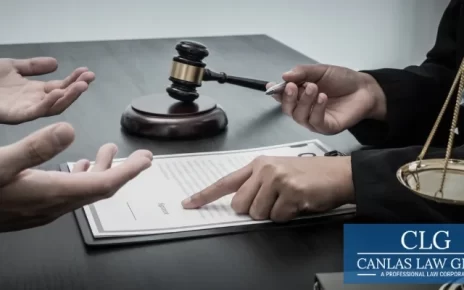There’s an undeniable allure to riding a motorcycle – the feeling of freedom, the connection to the road, the sheer thrill of the ride. But navigating the urban landscape on two wheels carries significant risks, particularly in a bustling metropolis like Chicago. Riders often wonder how their city compares to others in terms of safety. Are motorcycle accidents more common, less common, or about average in Chicago compared to other major U.S. cities?
Understanding where Chicago stands in the broader picture isn’t just about statistics; it’s about context. Knowing how our city compares can help riders make more informed safety choices and potentially shed light on factors that contribute to or mitigate risk. This post will delve into Chicago’s motorcycle accident landscape and compare it with other major urban centers like Los Angeles, New York City, and Houston, examining the numbers and the crucial factors behind them.
Motorcycle Accidents in Chicago: A Local Snapshot
Illinois, and Cook County specifically, see a significant number of motorcycle crashes each year. While motorcycles represent only about 3% of registered vehicles in Illinois, they tragically account for around 14-15% of all traffic fatalities – a stark indicator of the vulnerability of riders. In 2022, for instance, 146 motorcyclists lost their lives on Illinois roads.
Interestingly, despite these sobering numbers, some studies looking at fatality rates per capita over the past decade have placed Chicago relatively favorably among large U.S. cities. One analysis found Chicago had a motorcycle fatality rate of 6.05 per 100,000 residents, ranking it among the lower-risk major cities by that specific metric.
However, several local factors influence Chicago’s specific situation:
- Climate: Chicago’s distinct seasons mean a shorter riding season compared to southern or western states. This naturally limits annual mileage and exposure, likely lowering the raw annual accident count compared to year-round riding locations.
- Urban Density: Like any major city, Chicago’s dense traffic, complex intersections, and mix of vehicles create numerous potential conflict points, especially in downtown areas and along major thoroughfares.
- Helmet Law: Illinois has a partial helmet law, only requiring helmets for riders under 18. National and state data consistently show that a large percentage of fatally injured motorcyclists were not wearing helmets, highlighting a significant safety gap.
Chicago vs. The Nation: A Comparative Look
Comparing accident data across cities requires careful consideration. Raw numbers can be misleading due to differences in population and the number of registered motorcycles. Accident rates – calculated per 100,000 people or per 10,000 registered motorcycles – offer a more meaningful comparison, though variations in data collection methods between states can still introduce nuances.
Let’s see how Chicago stacks up against a few other major hubs:
- Los Angeles: California, with its year-round riding weather, unsurprisingly sees high raw numbers of motorcycle accidents (LA County reports over 2,500 annually) and fatalities (over 500 statewide in 2022). Factors like immense traffic volume, frequent congestion, and the legality of lane splitting create a unique riding environment. While California has a universal helmet law that significantly reduced fatalities upon implementation, the sheer exposure due to constant riding weather and traffic density keeps risks high. Compared to LA, Chicago’s raw annual numbers are likely lower due to the winter pause, but the specific risks per mile ridden might be influenced differently by factors like road conditions and intersection density versus LA’s freeway culture and lane splitting.
- New York City: Like Chicago, NYC has shown a relatively low fatality rate per capitain some studies (around 4.74 per 100k). Both cities share the challenge of extreme urban density and complex traffic interactions. NYC also benefits from a universal helmet law, the first in the nation. However, NYC experienced a concerning spike in motorcycle fatalities in 2023, reaching a record high, often involving unlicensed riders and unregistered bikes. This highlights that even cities with lower per-capita rates face significant, evolving challenges in protecting riders within a dense urban core. Motorcyclists remain disproportionately represented in NYC’s fatal crashes, similar to Chicago.
- Houston (Representing Texas): Texas presents a contrasting picture. It ranks as one of the more dangerous states for motorcyclists, with high and rising fatality numbers (563 in 2022). Houston leads Texas cities in motorcycle accidents. Contributing factors include a long riding season, sprawling urban layouts potentially encouraging higher speeds, and critically, Texas does nothave a universal helmet law for all riders (waived for those over 21 with specific insurance or course completion). The risk profile in Houston/Texas appears significantly higher than in Chicago/Illinois, likely driven heavily by the extended riding season and less stringent helmet requirements.
Key Factors Driving the Differences
The variations between these cities underscore several key influencing factors:
- Climate & Riding Season: This is perhaps the most significant differentiator for annual statistics. Year-round riding in LA and Houston means vastly more exposure and mileage compared to Chicago’s roughly six-to-eight-month season.
- Helmet Laws: Universal helmet laws (like in CA and NY) are proven life-savers. States or cities without them (like TX and partially in IL) consistently see higher proportions of unhelmeted fatalities.
- Traffic Density & Urban Layout: Dense, grid-like cities with frequent intersections (Chicago, NYC) foster different accident types (often lower speed, intersection-related) compared to sprawling cities with extensive freeway systems (LA, Houston) where high-speed collisions might be more prevalent.
- Riding Culture & Regulations: Legal lane splitting (CA), enforcement priorities, and the availability and uptake of rider safety courses can subtly shape the risk environment.
Safety Takeaways for Chicago Riders
While Chicago might fare better in some statistical comparisons than warmer-climate cities, the risk to individual riders remains substantial. Here’s how to apply these insights locally:
- Acknowledge the Risk: Don’t be complacent. Motorcyclists are far more vulnerable than car occupants everywhere, including Chicago. If you are involved in an accident, a motorcycle accident lawyer Chicagocan help ensure you are fairly compensated for your injuries and damages.
- Maximize Visibility: Especially in dense city traffic, assume you are invisible. Wear bright or reflective gear, use headlights day and night, and position yourself for maximum visibility in lanes.
- Master Defensive Riding: Anticipate errors from other drivers, particularly at intersections and during lane changes. Manage your speed, maintain a safe following distance, and always have an escape route planned.
- Gear Up Every Ride: Always wear full protective gear, including a DOT-compliant helmet, sturdy jacket, gloves, pants, and over-the-ankle boots. Illinois law may not require a helmet for all adults, but physics doesn’t care about loopholes. Proper gear is your best defense against serious injury.
- Be Seasonally Aware: Exercise extra caution at the start of the riding season (drivers aren’t used to seeing bikes) and towards the end (changing weather, road debris). Be mindful of potholes exacerbated by winter freezes.
Conclusion
So, how common are motorcycle accidents in Chicago compared to other cities? Based on available data, Chicago likely experiences fewer raw accidents annually than year-round riding hubs like Los Angeles or Houston, partly due to its shorter season. Its fatality rate per capita has also appeared relatively low compared to many major cities in some analyses, similar to New York City. However, this statistical comparison doesn’t negate the significant dangers. Motorcyclists remain vastly overrepresented in serious and fatal crashes in Chicago, as they do in most urban environments.
Ultimately, safe riding isn’t about comparative statistics; it’s about individual responsibility and awareness. Understanding the unique challenges of Chicago’s streets – the dense traffic, the specific intersection risks, the variable weather, the partial helmet law – empowers riders to take proactive safety measures. Ride alert, ride defensively, ride protected, and enjoy the journey safely.





